Nu är det ett nytt år och björken som jag följde under 2016 har bytts ut mot en rönn (Sorbus aucuparia). Jag valde ut 2017 års träd att följa redan förra månaden. Eftersom det är mitt i vintern har inte mycket hänt med rönnen sedan i december. Detta har hittills varit en mycket mild vinter med bara några enstaka dagar med temperaturer under -20°C men desto fler dagar med plusgrader och till och med regn. Trots det är marken fortfarande täckt av snö, även om träden till största delen inte är det.
Now it’s a new year and the birch that I followed during 2016 had been replaced by a rowan (Sorbus aucuparia). I already chose which tree to follow during 2017 a month ago. Since it’s the middle of winter the rowan looks the same as it did in December. This has so far been a very mild winter with only a few days with temperatures below -20°C but far more days with temperatures above freezing and even rain. Despite this the ground is still covered by snow, even though most trees are not.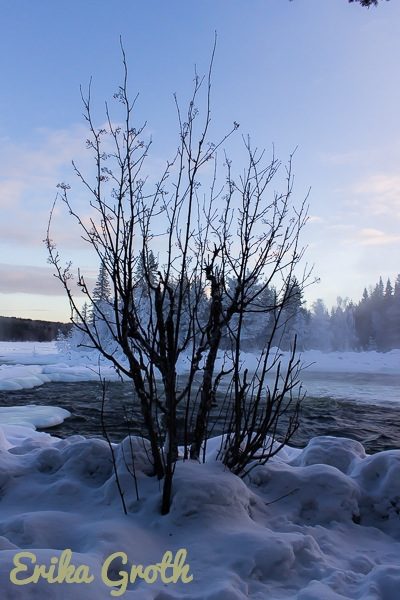
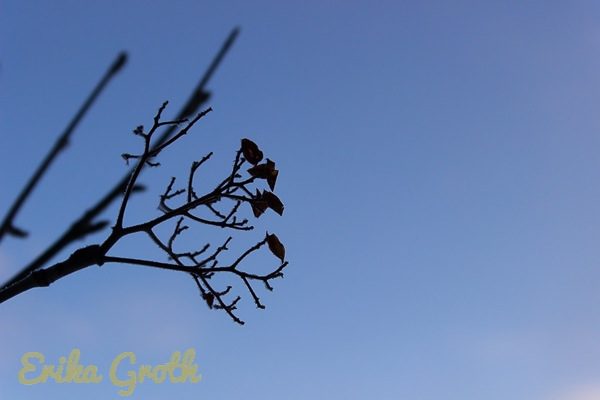
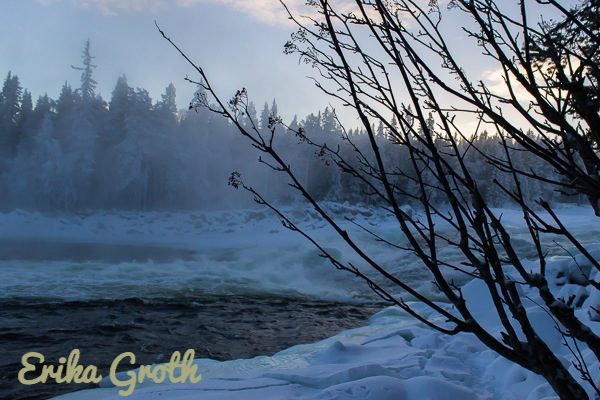
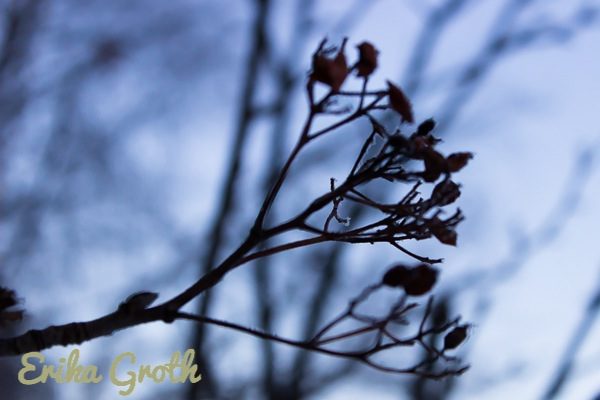
Det är visserligen vinter och därför relativt lite vatten i Storforsen, men forsen är ändå rätt imponerande. Jag filmade en liten snutt med mobilen för att försöka fånga det dånande ljudet från forsen. Det gick sådär. Testade också att ta några bilder på forsen med lång slutartid (1/4 sek).
Vi har några timmars dagsljus den här tiden på året, men solen orkar ännu inte tillräckligt högt upp för att synas över bergen vid Storforsen.
Jag är rätt besviken att jag ännu inte sett till några djur vid Storforsen. Det ska bland annat finnas utter som brukar synas till på isen på vintern.
It’s winter and therefore not much water in Storforsen (The Grand Rapid), but the rapid is still rather impressive. I did a little movie using my mobile phone in order to try to capture the roaring sound of the rapid, but I’m not sure it worked that well. I also tried to take a few photos of the rapid with long exposure time (1/4 sec).
We have a few hours of daylight at this time of year, but the sun doesn’t quite reach high enough on the sky to be visible above the mountains at Storforsen yet.
I’m quite disappointed that I still haven’t seen any animals at Storforsen. There is for example supposed to be otters that come up on the ice at winter.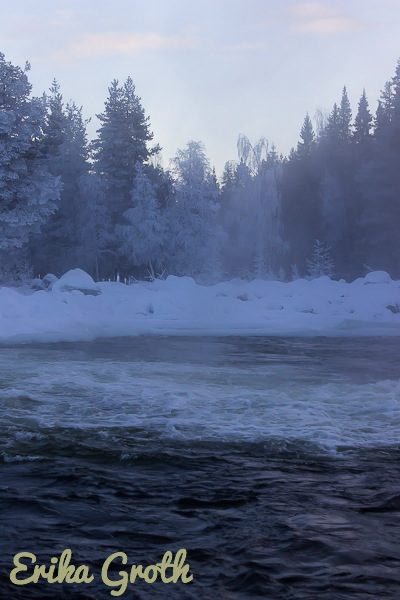
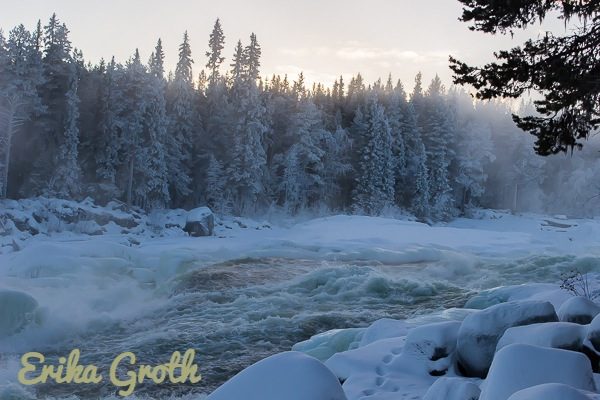
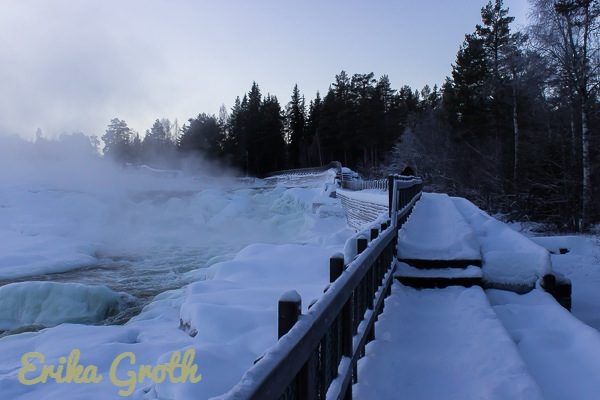
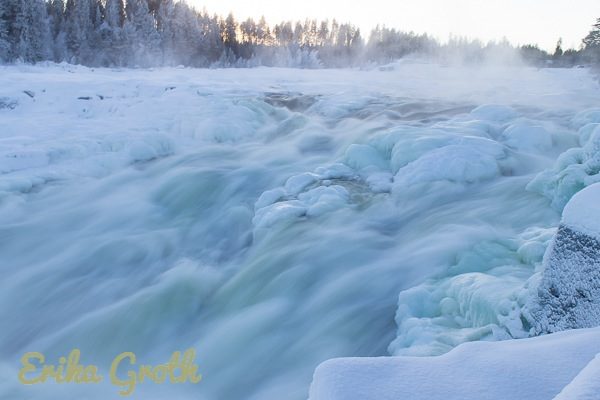
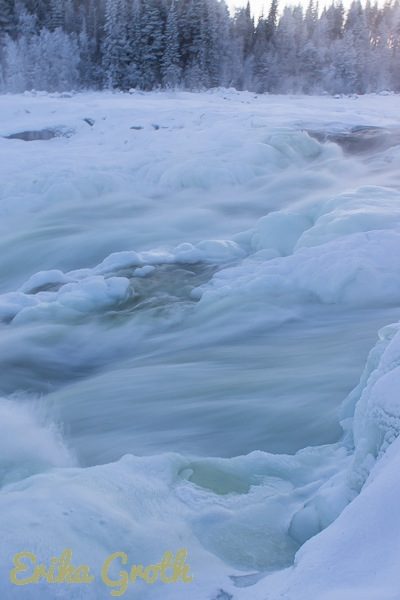
Fotona är tagna 2017-01-07 i Storforsen, Bredsel.
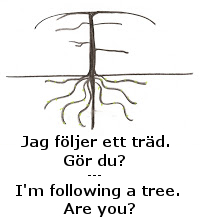 Kolla även in andra trädföljare på The Squirrelbasket (internationellt).
Kolla även in andra trädföljare på The Squirrelbasket (internationellt).

Your rowan looks beautiful even in winter; it is a tree I’ve never gotten to see in person, so I hope to see more of it in your blog! Your photos and video of the rapids are wonderful…
Your winter scenery is beautiful! We have a lot less of that kind of frosty beauty these days. Last week we had an Arctic air mass arrive, with temps to -40 (I now know that -40 F = -40 C) and a decent amount of snowfall. But it didn’t stay long and now there is rain in the forecast! Very weird.
We had a few days with temperatures around -30°C shortly before I was out photographing the tree. Further north in Kiruna and Nattavaara it dropped to -42°C.
But so far the cold temperatures only last for a few days at the time this winter. Then we are back again to the extremely mild winter temperatures for this region of about +5°C to -10°C. That’s what southern Sweden should have in midwinter, not northern Sweden.
But given what is happening in the Arctic, weird winters like this are just the beginning…
What an amazing place you live in! But so cold! I liked the video and your tree looks well shaped.
This week we had a flock of waxwings (Bombycilla garrulus) in Cardiff, which is unusual this far south-west. Of course they were eating ROWAN berries (which is why I mention it) – in a Kentucky Fried Chicken car park in the city.
They visit here only in winter, but do these birds breed in your area?
Blwyddyn Newydd Dda, as we say in Wales 🙂
The waxwings (sidensvansar in Swedish) are well known for eating rowan berries in winter, which is why if you do a google image search of ”sidensvans” nearly every picture of the bird you find has rowan berries in it.
This bird breeds in the conifers forests of the northernmost taiga region (including northern Sweden, Finland, Russia and North America), but northern Sweden is on the extreme western edge of its Eurasian breedning area. So the waxwings that visited you might have come from here, but it’s more likely that they came from Finland or Russia.
In summer they hide in the northern conifer forests eating insects. There you practically never see them. In autumn and winter they form big flocks that leave the forests and instead fly around in large parts of Europe and visit gardens etc. where they eat fruits and berries.
I grew up in California, where we occasionally saw cedar waxwings in winter (Bombycilla cedrorum). They would show up in our yard to eat pyracantha berries, we always enjoyed it. The story was that they would get ”drunk” from them! Fun story but I can’t say we ever saw evidence … urban myth? Have you heard of such a thing?
Stories about birds – and other animals like elks (moose) – getting drunk after eating fermented fruits and berries are common here, not just in folklore but also in both national and local media. Waxwings in particular are supposed to get drunk on fermented rowan berries every year and then cause problems by either falling down from the sky or crashing into things when flying. And the huge elks are supposed to be really mean drunks.
Personally though I suspect that drunk animals in nature are far more common in the stories than in reality. Evidence is scarce and when a story sounds too good to be true, it usually is…
hello Erika, your photos look beautiful with the white snow though I imagine it is quite cold, your rowan looks a nice shrubby tree, good for wildlife, I find it interesting that where you are the uneaten berries have frozen, where I am the berries get blown off the trees if the birds do not eat them quickly, I am also following a rowan this year, Frances